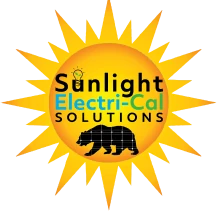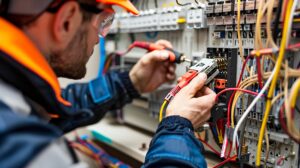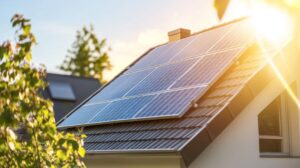With the increasing popularity of renewable energy, solar power is an excellent option for Castro Valley homeowners. Taking the step to install solar panels is a significant investment in energy independence, cost savings, and environmental sustainability. However, preparing your home for solar installation requires careful planning to maximize the benefits of your system. Below, we’ll cover essential tips for evaluating your home, understanding your energy needs, and selecting the best solar solution for your property.
Assess Your Home’s Suitability for Solar Panels
The first step in preparing your Castro Valley home for solar installation is evaluating whether your property is suited for solar energy. Castro Valley’s abundant sunshine makes it a prime location for solar power, but factors such as roof structure, shading, and orientation play a critical role.
Factors to Consider:
Roof Condition and Size: Inspect your roof’s condition and age. Solar panels have a lifespan of 25–30 years, so your roof should be able to support them for the same period. If your roof needs repairs or replacement, address these before installation.
Roof Orientation: South-facing roofs receive the most sunlight, making them the ideal position for solar panels. However, east- and west-facing roofs can still provide good energy output with proper design.
Shading and Obstructions: Assess whether trees, chimneys, or nearby buildings cast significant shadows on your roof. Removing or trimming obstructions can increase the efficiency of your solar panels.
Hiring a professional to conduct a solar feasibility assessment ensures an accurate evaluation of your home’s potential and identifies any adjustments needed before installation.
Understand Your Energy Needs
To design a solar system tailored to your home, you must first understand your energy consumption patterns. Analyzing your utility bills provides insight into how much electricity you use and when you use it.
Steps to Analyze Your Energy Needs:
Review Monthly Bills: Look at at least 12 months of utility bills to identify average energy consumption and seasonal variations.
Identify Peak Usage Times: Note when your energy usage peaks. This is particularly important if you’re considering a solar battery, which stores excess energy for use during high-demand periods.
Evaluate Future Needs: If you plan to purchase an electric vehicle or expand your household, account for increased energy demands in your solar system design.
By understanding your energy usage, you can determine the optimal size and type of solar system for your home. This step ensures that your system generates enough electricity to meet your needs while maximizing efficiency.
Research Local Incentives and Regulations
California is a leader in solar energy adoption, offering numerous incentives and programs that make the transition more affordable for homeowners. Castro Valley residents can benefit from both state and federal initiatives.
Key Incentives:
Federal Investment Tax Credit (ITC): This credit allows you to deduct up to 30% of the cost of your solar system from your federal taxes.
Net Billing Tariff: Replacing the older NEM programs, the Net Billing Tariff compensates homeowners for exporting excess solar energy to the grid at rates lower than the cost of grid energy. To maximize benefits, consider adding a solar battery to store excess energy for use during peak-rate hours or outages.
Property Tax Exemption: California ensures that solar installations will not increase property taxes, even though they add significant value to your home.
Most solar installers handle permitting on your behalf, but understanding these policies ensures transparency and helps avoid delays.
Select a Trusted Solar Installer
Choosing the right solar installer is critical to a successful and hassle-free installation process. Look for a company that understands the unique needs of Castro Valley homeowners and provides personalized solutions.
Tips for Selecting an Installer:
Verify Experience and Certifications: Ensure the company is certified by the North American Board of Certified Energy Practitioners (NABCEP) and has a proven track record in the area.
Ask for References and Reviews: Speak with past clients or read online testimonials to gauge the quality of their work.
Compare Quotes: Obtain multiple quotes to ensure you’re receiving competitive pricing and a system tailored to your needs.
Review Warranty Options: A reliable solar installer should offer warranties on both equipment and installation, providing peace of mind for years to come.
Partnering with a reputable company like Sunlight Electrical Solutions ensures expert guidance, high-quality materials, and long-term support for your solar journey.
Prepare for the Installation Process
Once you’ve selected an installer, preparing your home for the installation day ensures a smooth and efficient process. While your solar provider will handle most of the work, there are steps you can take to assist the process.
Installation Day Tips:
Clear the Area: Remove any outdoor furniture, vehicles, or items near your roof and electrical panels. This creates a safe workspace for installers.
Ensure Easy Access: Make sure your electrical panel and attic are accessible for any necessary upgrades or wiring.
Confirm the Timeline: Double-check the installation schedule with your installer and ensure someone is home to address any questions.
The installation process typically takes one to three days, depending on the complexity of your system. Once completed, your system will undergo inspections and grid connection before becoming operational.
Optimize Your Solar System with Custom Features
Modern solar technology offers a range of customization options to suit your specific needs. These options help you design a system that maximizes energy savings and reliability.
Popular Features:
Solar Batteries: Adding a battery storage system, such as the Tesla Powerwall, Enphase, or Franklin allows you to store excess energy for use during power outages or peak rate hours.
Monitoring Tools: Many systems include apps or tools to monitor energy production and usage in real-time.
These features enhance the value and performance of your solar system, ensuring you get the most out of your investment.
Plan for Long-Term Maintenance
Solar panels are low-maintenance, but regular care is essential to keep them operating at peak efficiency. Castro Valley’s weather is generally mild, but periodic cleaning and inspections can extend your system’s lifespan.
Maintenance Checklist:
Panel Cleaning: Remove dirt, leaves, and debris from panels using a soft brush or hire professional cleaners.
Monitor Performance: Use your monitoring tools to track energy production and identify any issues early.
Switching to solar energy is an investment in your home’s future, and careful preparation ensures a seamless transition. By evaluating your home’s solar potential, understanding your energy needs, and partnering with a trusted installer, you can confidently make the switch to solar energy in Castro Valley. Take the first step today by contacting Sunlight Electrical Solutions to schedule a consultation and explore the best solar solutions for your Castro Valley home.







